 Why did you choose to pursue this particular experience?
Why did you choose to pursue this particular experience?
In the summer of 2020, I began working at Six Flags Great Adventure Wild Safari in Jackson, NJ, as a seasonal warden focusing specifically on the husbandry of various species in the safari park. The following summer, I participated in a pre-veterinary internship. Since entering vet school, I have continued to return home to the safari on holiday breaks. It felt only right that my last summer, prior to entering clinics, be spent at the place that has helped me discover my passion for zoological medicine and continues to challenge me to improve in the clinical skills, diagnostics techniques, and treatment methods involved in the field.
What was a typical day like?
While participating in the veterinary internship, I was mainly responsible for the care of the animals that resided in the clinic and assisting the veterinary staff with procedures and treatments. A typical day began with bottle feeding and treating animals in the clinic followed by accompanying one of the vets on morning rounds of the park. After we rode through the safari, following up on patients and observing all the species within the park, each day was variable. This is the aspect of zoo medicine that has always been so appealing to me! Some days were booked with planned procedures and check-ins on species of all shapes and sizes. Others would start off calmly and the course of the day would change abruptly with reports of concerns out in the safari. Throughout the day, I would keep track of neonatal feeding schedules and monitoring critical cases that were in the clinic. I also played a role in teaching the pre-veterinary interns that were rotating through the clinic anatomic and physiologic concepts that will hopefully prepare them for their future goals of veterinary school. No matter which path the day took, each day would end with another drive through the safari and watching the elephants walk back to the barn.

What was your favorite memory from this experience?
Each time I return to the safari, I love seeing animals that were hand-reared or patients in the clinic, doing well on exhibit. In the early winter of 2021, a young Roosevelt Elk was brought into the clinic with a severe infection in her hoof. While there for winter break, I had the opportunity to help hand-rear the elk and assist with chemical immobilizations, bandage changes, and radiographs of her distal limb. After a lengthy period of treatment, her condition began to improve. When returning this summer, I was excited to see how well she was doing as she began her reintroduction phase with other species in the American Section!
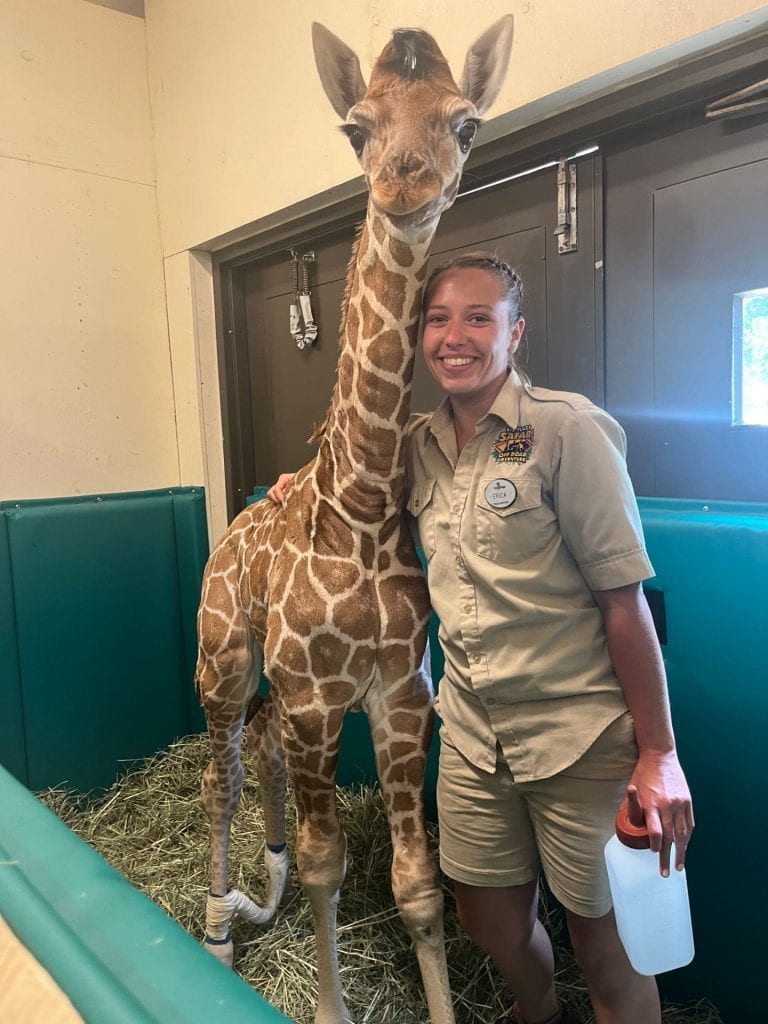 What species did you enjoy working with the most?
What species did you enjoy working with the most?
Nothing could top the giraffe calves born this summer! One in particular, Chich, was by far my favorite as I had the privilege of caring for the not–so-little-guy in the clinic. Being born at roughly 200lbs, Chich was having difficulty standing on his own, and needed additional care to help him get back on his feet!
What were the outcomes of this experience?
Through interning in the safari, I have become more confident in all aspects of veterinary medicine. I developed essential clinical skills like venipuncture and injection administration, while also expanding upon skills, like darting, are more specific to zoo medicine. Improving upon evaluating diagnostics, specifically interpreting radiographs and blood work, was a goal I set for myself this summer, and through the guidance of my mentors I feel like I have made strides towards achieving that. The most valuable veterinary skill I feel I improved upon was my critical thinking, as my thoughts on every aspect of a case were always prompted before the next steps were pursued. This improved not only my thought process surrounding the pharmacology of chemical immobilization and treatment of disease immensely, but also allowed me to step back and consider factors like herd dynamics when it came to the methods that would be used for diagnostics and treatment. Overall, building the trust of my mentors to be more involved in the cases within safari, teaching the pre-veterinary interns, and beginning to write medical records, was a result of this internship that I was beyond grateful for.
What are your goals in veterinary medicine?

With ambitions to become a zoo veterinarian, this opportunity allowed me to experience what every day could look like within a zoo. After being exposed to field medicine in the safari setting, it has fine-tuned my goals to aspire to work in a safari setting. Intercommunication between a number of species over a vast landscape creates a whole different aspect of veterinary medicine that is scarcely found anywhere else. One must incorporat
e multi-herd dynamics, population medicine, and focus on the individual animal all under one umbrella, which excites me. With so many different paths open to pursue in veterinary medicine, being passionate about what you are doing and genuinely happy in a position is something that should never be compromised. After this internship, I have cemented that zoo medicine is where I am meant to be, and where I hope to find myself in the future.
What are your recommendations to students interested in the wildlife/zoo field?
I would advise those interested in the wildlife/zoo field to take advantage of every opportunity that comes your way because you never know what doors that experience may open for you. Enter every new experience with an open mind and this will allow you to take away the most you can from each. Once you find what makes you happy, work hard and find a strong support system that you can rely on to help you remember why you love doing what you are doing if times get tough.
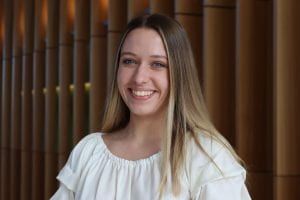
Erica Jackson, Class of 2025, is originally from Toms River, NJ and obtained her BS in Pre-Veterinary Medicine at the University of Massachusetts Amherst. While at Cornell, Erica was the President of the Zoo and Wildlife Society and a student technician in the Exotics Department of the CUHA. She also was a member of SAVMA, AABP, and enjoyed choreographing and dancing in the Dance Collective. Erica aspires to pursue zoological medicine in the future and is very appreciative of her mentors and advisor for helping her develop as a veterinary student and professional.




 Dr. Marinkovich is thrilled to come back to Cornell University and looks forward to seeing how it has changed since graduating in 2014. He is really looking forward to reconnecting with his vet school mentors, namely Dr. Noha Abou-Madi and Dr. Karen Kerns, who both play such an important role in the lives of students interested in pursuing zoological medicine. But, perhaps most notably, Dr. Marinkovich is eager to interact with vet students who share his drive to make a difference in the world through the lens of veterinary medicine. It was not that long ago that Dr. Marinkovich was an aspiring zoo vet like many of us, so he recognizes the stress and hard work that goes into actualizing that dream. Through his lecture, he hopes to convey excitement, ambition, and peace of mind, being a huge proponent for mental health in veterinary medicine. I felt so inspired by Dr. Marinkovich in just the short while I got to spend interviewing him for the WildLIFE Blog, an interaction I consider myself lucky to have had. Be sure to register for the 17th biannual Special Species Symposium so that you can relish in his journey towards becoming a Clinical Veterinarian at the San Diego Zoo, a story that will fill you with admiration, motivation, and awe.
Dr. Marinkovich is thrilled to come back to Cornell University and looks forward to seeing how it has changed since graduating in 2014. He is really looking forward to reconnecting with his vet school mentors, namely Dr. Noha Abou-Madi and Dr. Karen Kerns, who both play such an important role in the lives of students interested in pursuing zoological medicine. But, perhaps most notably, Dr. Marinkovich is eager to interact with vet students who share his drive to make a difference in the world through the lens of veterinary medicine. It was not that long ago that Dr. Marinkovich was an aspiring zoo vet like many of us, so he recognizes the stress and hard work that goes into actualizing that dream. Through his lecture, he hopes to convey excitement, ambition, and peace of mind, being a huge proponent for mental health in veterinary medicine. I felt so inspired by Dr. Marinkovich in just the short while I got to spend interviewing him for the WildLIFE Blog, an interaction I consider myself lucky to have had. Be sure to register for the 17th biannual Special Species Symposium so that you can relish in his journey towards becoming a Clinical Veterinarian at the San Diego Zoo, a story that will fill you with admiration, motivation, and awe.
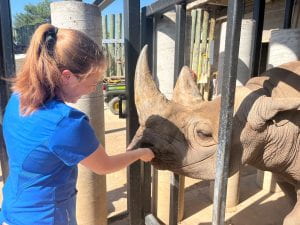

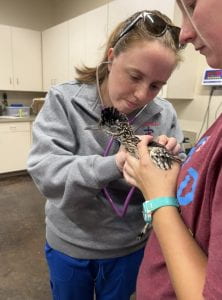
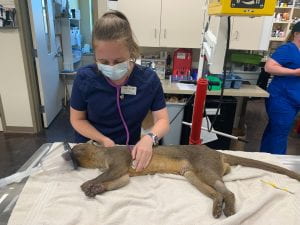
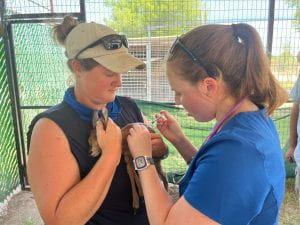
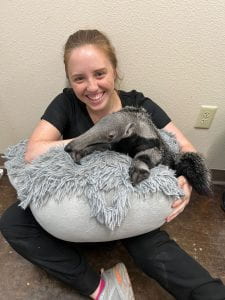
 Colleen Sorge, Class of 2024, is a Cornell DVM student from Long Island, NY. She obtained her undergraduate degree in Animal Science from Cornell University in 2020. She has a wide range of interests within the veterinary field, including both small animal and wildlife medicine.
Colleen Sorge, Class of 2024, is a Cornell DVM student from Long Island, NY. She obtained her undergraduate degree in Animal Science from Cornell University in 2020. She has a wide range of interests within the veterinary field, including both small animal and wildlife medicine. There was once a time in my life when I could only dream about performing a physical exam on a sedated jaguar in the Belizean jungle, but that dream, along with many others, became a reality as a student enrolled in Dr. Noha Abou-Madi’s International Experience in Wildlife Health and Conservation course. Cornell University College of Veterinary Medicine (CUCVM) has been partnered with the Belize Zoo since 2011 to provide state-of-the-art veterinary care while simultaneously fulfilling the dreams of adventurous veterinary students looking to hone their clinical skills. After having to cancel this trip multiple times throughout the COVID-19 pandemic, Dr. Noha Abou-Madi could not be more excited to offer this course once again to those with career goals involving wildlife and zoological medicine. In this course, students travel to the Belize Zoo where they stay for a week to gain hands-on experience with various mammals, birds, and reptiles native to Belize.
There was once a time in my life when I could only dream about performing a physical exam on a sedated jaguar in the Belizean jungle, but that dream, along with many others, became a reality as a student enrolled in Dr. Noha Abou-Madi’s International Experience in Wildlife Health and Conservation course. Cornell University College of Veterinary Medicine (CUCVM) has been partnered with the Belize Zoo since 2011 to provide state-of-the-art veterinary care while simultaneously fulfilling the dreams of adventurous veterinary students looking to hone their clinical skills. After having to cancel this trip multiple times throughout the COVID-19 pandemic, Dr. Noha Abou-Madi could not be more excited to offer this course once again to those with career goals involving wildlife and zoological medicine. In this course, students travel to the Belize Zoo where they stay for a week to gain hands-on experience with various mammals, birds, and reptiles native to Belize.
 The relationship between the Belize Zoo and CUCVM is one that not only fosters students’ education and clinical skills as they pertain to zoological medicine, but also as they pertain to conservation. The Belize Zoo is highly committed to the animals within their direct care, but they also care for those that live beyond their gates. Erin Guntrum ‘25 recalls a lecture that we received highlighting the integral role that zoos play in the realm of conservation in which we learned that the Belize zoo has been purchasing land to be utilized as wildlife corridors to once again connect wild populations that have been separated by human establishments. Members of the Belize zoo are very aware that the human population is expanding and so too is development, nonetheless they are trying their best to ensure that land exists for wildlife in the future.
The relationship between the Belize Zoo and CUCVM is one that not only fosters students’ education and clinical skills as they pertain to zoological medicine, but also as they pertain to conservation. The Belize Zoo is highly committed to the animals within their direct care, but they also care for those that live beyond their gates. Erin Guntrum ‘25 recalls a lecture that we received highlighting the integral role that zoos play in the realm of conservation in which we learned that the Belize zoo has been purchasing land to be utilized as wildlife corridors to once again connect wild populations that have been separated by human establishments. Members of the Belize zoo are very aware that the human population is expanding and so too is development, nonetheless they are trying their best to ensure that land exists for wildlife in the future.
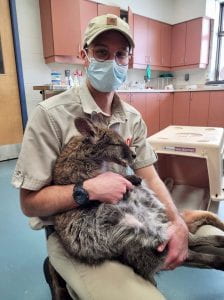 If Dr. Benjamin Jakobek decides to write a book, I will be first in line to buy it. As he tells me about some of the projects he’s been a part of, including capturing and collaring muskox in Nunavik and working to transport caribou to a protected environment, he is a reminder to all of us aspiring veterinarians that we will one day have the capability and arguably, the responsibility, to help protect wild animals and places around the world. After obtaining his DVM from Cornell University College of Veterinary Medicine in 2020, Dr. Jakobek completed a one-year small animal rotating internship at the University of Prince Edward Island. Now, he is a zoological medicine resident and a master’s student at the University of Montréal focusing on free-ranging wildlife health management. Though each day’s work is different, Dr. Jakobek divides the bulk of his time between the Granby Zoo, the Aquarium of Québec, the University of Montréal’s wildlife pathology service and raptor clinic, as well as federal and provincial wildlife agencies. His current program gives him the opportunity to hone his research and his clinical skills into something he calls “the opportunity of a lifetime.” This program has allowed him to work on research projects ranging from studying toxoplasmosis in endangered beluga whales to environmental interventions against Lyme disease, among many others.
If Dr. Benjamin Jakobek decides to write a book, I will be first in line to buy it. As he tells me about some of the projects he’s been a part of, including capturing and collaring muskox in Nunavik and working to transport caribou to a protected environment, he is a reminder to all of us aspiring veterinarians that we will one day have the capability and arguably, the responsibility, to help protect wild animals and places around the world. After obtaining his DVM from Cornell University College of Veterinary Medicine in 2020, Dr. Jakobek completed a one-year small animal rotating internship at the University of Prince Edward Island. Now, he is a zoological medicine resident and a master’s student at the University of Montréal focusing on free-ranging wildlife health management. Though each day’s work is different, Dr. Jakobek divides the bulk of his time between the Granby Zoo, the Aquarium of Québec, the University of Montréal’s wildlife pathology service and raptor clinic, as well as federal and provincial wildlife agencies. His current program gives him the opportunity to hone his research and his clinical skills into something he calls “the opportunity of a lifetime.” This program has allowed him to work on research projects ranging from studying toxoplasmosis in endangered beluga whales to environmental interventions against Lyme disease, among many others.

 Looking towards his future, Dr. Jakobek remains interested in both clinical medicine and research. He is particularly drawn to work in more remote areas of the world. “I think this appeals to me because it’s in those remote places that you find rich biodiversity and natural habitats often needing research and support for their protection.” Another highlight of his residency has been working alongside different community stakeholders to conserve habitats and safeguard wild species. He describes a particularly impactful experience transporting caribou alongside wildlife biologists, indigenous peoples, wildlife technicians, and veterinarians, all of whom wanted to ensure the survival of this particular caribou population, of which there were only seventeen individuals remaining. Of course, while his experiences during his residency have been rewarding, he is also frequently reminded of the progress still to be made. “This work [with caribou] shows how important it is to protect wildlife habitats while we still have them and value wildlife, while we have the great fortune to be able to share the planet with them.”
Looking towards his future, Dr. Jakobek remains interested in both clinical medicine and research. He is particularly drawn to work in more remote areas of the world. “I think this appeals to me because it’s in those remote places that you find rich biodiversity and natural habitats often needing research and support for their protection.” Another highlight of his residency has been working alongside different community stakeholders to conserve habitats and safeguard wild species. He describes a particularly impactful experience transporting caribou alongside wildlife biologists, indigenous peoples, wildlife technicians, and veterinarians, all of whom wanted to ensure the survival of this particular caribou population, of which there were only seventeen individuals remaining. Of course, while his experiences during his residency have been rewarding, he is also frequently reminded of the progress still to be made. “This work [with caribou] shows how important it is to protect wildlife habitats while we still have them and value wildlife, while we have the great fortune to be able to share the planet with them.”
 Colleen Sorge, Class of 2024, is a Cornell DVM student from Long Island, NY. She obtained her undergraduate degree in Animal Science from Cornell University in 2020. She has a wide range of interests within the veterinary field, including both small animal and wildlife medicine.
Colleen Sorge, Class of 2024, is a Cornell DVM student from Long Island, NY. She obtained her undergraduate degree in Animal Science from Cornell University in 2020. She has a wide range of interests within the veterinary field, including both small animal and wildlife medicine.
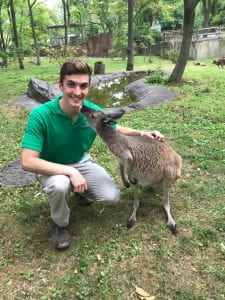
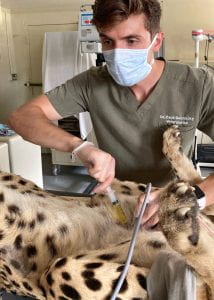
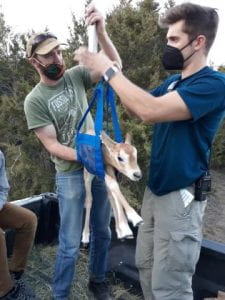
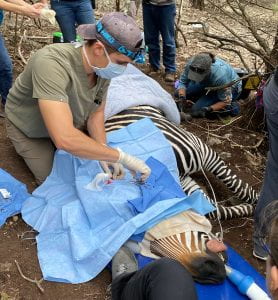
 Dr. Matt Marinkovich always had a passion for wildlife but was initially unsure as to what career path might suit him best. “I always knew I wanted to do something with wildlife or something conservation related, but it took a little while to find what that niche was, whether PhD or vet school. I had a couple experiences at SeaWorld San Diego when I was in undergrad and at the National History Museum in Santa Barbara working with the Marine Mammal Stranding Network that led me to really feel like veterinary medicine was the route to go.” After taking 3 gap years, he began his time at Cornell Vet, going on to complete his DVM in 2014.
Dr. Matt Marinkovich always had a passion for wildlife but was initially unsure as to what career path might suit him best. “I always knew I wanted to do something with wildlife or something conservation related, but it took a little while to find what that niche was, whether PhD or vet school. I had a couple experiences at SeaWorld San Diego when I was in undergrad and at the National History Museum in Santa Barbara working with the Marine Mammal Stranding Network that led me to really feel like veterinary medicine was the route to go.” After taking 3 gap years, he began his time at Cornell Vet, going on to complete his DVM in 2014. While well aware that the field of zoological medicine is competitive, Dr. Marinkovich has a refreshing viewpoint. “I think really just focusing on becoming the best vet you can be is the number one step. I think what we look for in terms of a good resident is someone who has a really good foundation in veterinary medicine, and that involves all species. The next time you have to help pull a calf, it may be an exotic bovid rather than a dairy cow.” His perspective, he says, is largely informed by his respect for mental health. “I’m a huge proponent of mental health and being happy with what you’re doing and enjoying each step of the journey. I think you need to take each step and try to get the most out of each experience for what it is. It’s great if zoo residency or working a zoo job works out, but if not, being a vet is an awesome job and you still have that to be fulfilled by. You have to try to not let the quest for that elusive zoo resident position to be the end all and be all of what it means to be fulfilled in this field. Developing your skill sets, really focusing on your own mental health, and who you are as a vet and as a person is going to set you up for success.”
While well aware that the field of zoological medicine is competitive, Dr. Marinkovich has a refreshing viewpoint. “I think really just focusing on becoming the best vet you can be is the number one step. I think what we look for in terms of a good resident is someone who has a really good foundation in veterinary medicine, and that involves all species. The next time you have to help pull a calf, it may be an exotic bovid rather than a dairy cow.” His perspective, he says, is largely informed by his respect for mental health. “I’m a huge proponent of mental health and being happy with what you’re doing and enjoying each step of the journey. I think you need to take each step and try to get the most out of each experience for what it is. It’s great if zoo residency or working a zoo job works out, but if not, being a vet is an awesome job and you still have that to be fulfilled by. You have to try to not let the quest for that elusive zoo resident position to be the end all and be all of what it means to be fulfilled in this field. Developing your skill sets, really focusing on your own mental health, and who you are as a vet and as a person is going to set you up for success.” 


 Carolina Baquerizo, Class of 2024, received her BS in Biological Science from Florida State University. She began volunteering at Zoo Miami when she was 15 and has held multiple zoological internships since then. She aspires to become a zoo veterinarian as a way to participate in
Carolina Baquerizo, Class of 2024, received her BS in Biological Science from Florida State University. She began volunteering at Zoo Miami when she was 15 and has held multiple zoological internships since then. She aspires to become a zoo veterinarian as a way to participate in 
 For students looking to enter the increasingly competitive field, Dr. Radcliffe’s first suggestion is to capitalize on the opportunities we have here at Cornell Vet. “I think there’s a lot of expertise here at Cornell and there’s a lot of opportunities.” These include Engaged Cornell, Expanding Horizons, and a myriad of courses aimed at students interested in pursuing careers in zoo, wildlife, and exotics medicine. Dr. Radcliffe teaches a 3-part course called Conservation with Communities for One Health, which reflects the multi-disciplinary mindset crucial to effective conservation work. Both undergraduate and veterinary students are able to take this course, and a subset of them travel in teams to field sites in the Congo, Uganda, and Indonesia to participate in projects with institutions that Dr. Radcliffe has built relationships with over the years, including the Jane Goodall Institute and WWF-Indonesia. Coursework aside, Dr. Radcliffe encourages students to take advantage of networking opportunities and to pursue externships that excite them.
For students looking to enter the increasingly competitive field, Dr. Radcliffe’s first suggestion is to capitalize on the opportunities we have here at Cornell Vet. “I think there’s a lot of expertise here at Cornell and there’s a lot of opportunities.” These include Engaged Cornell, Expanding Horizons, and a myriad of courses aimed at students interested in pursuing careers in zoo, wildlife, and exotics medicine. Dr. Radcliffe teaches a 3-part course called Conservation with Communities for One Health, which reflects the multi-disciplinary mindset crucial to effective conservation work. Both undergraduate and veterinary students are able to take this course, and a subset of them travel in teams to field sites in the Congo, Uganda, and Indonesia to participate in projects with institutions that Dr. Radcliffe has built relationships with over the years, including the Jane Goodall Institute and WWF-Indonesia. Coursework aside, Dr. Radcliffe encourages students to take advantage of networking opportunities and to pursue externships that excite them.



 Jared Zion, Class of 2023, hails
Jared Zion, Class of 2023, hails